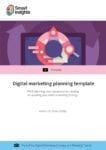Consumer brand marketing made creative by Honda
We look back to 2003 and Honda were struggling to make a sustainable impact in the European markets so turned to brand marketing . They had seen a decline in sales since 1998 and their 2nd position to Toyota had been lost to Nissan. Japanese car placement in the European market was essential, and Honda needed to make a bigger splash with a smaller pebble.

The Play
In 2001 that Wieden+Kennedy proposed to Honda a new advertising strategy based on the company’s Japanese motto, “Yume No Chikara” (“Power of Dreams”). The stated goal of the campaign was to increase Honda’s share of the UK market to five percent within three years and to change the public image of the brand from “dull but functional” to “warm and consumer-friendly”, all on a lower marketing budget than their predecessors had demanded.
In 2002, Matt Gooden, a creative director, and Ben Walker, a copywriter, proposed a new television and cinema advertisement to promote the seventh-generation Honda Accord line that had recently been rolled out in Europe and Japan. The advertisement, based on a complex chain reaction of moving parts from the Accord itself, was approved and given the working title “Cog”
Gooden and Walker had been working together since 1988. By 2002, their portfolio included a Guinness World Record-holding one-second advertisement produced for Leo Burnett Worldwide, and a depression-awareness booklet for the Charlie Waller Memorial Trust. The pair approached Honda with a rough, low-budget 30-second trial film inspired by the children’s board game Mouse Trap, Caractacus Potts’ breakfast-making machine in the film Chitty Chitty Bang Bang, and a 1987 Swiss art film by Peter Fischli and David Weiss, Der Lauf der Dinge (The Way Things Go).
The Cog
The Honda executives were intrigued but demanded a cut using actual automotive parts before giving permission to go ahead with the full-scale project. “Cog” was approved with a budget of £1 million, and Gooden and Walker recruited a London-based team to go through the logistics of the shoot in detail.
The team, which comprised engineers, special effects technicians, car designers, and even a sculptor, spent a month working with parts from a disassembled Honda Accord before the design for the advertisement’s set was even finalized. Approval for the script took another month.
Honda insisted that several specific Accord features, such as a door with a wing-mirror indicator and a rain-sensitive windscreen, appear in the final cut. The company planned to highlight these features in sales brochures. Antoine Bardou-Jacquet was hired to direct the piece.
The outcome
After the publicity created by ‘Cog’, hits on the Honda website quadrupled to 55,000 a week, and brochure requests trebled. Between April 2002 and December 2003, visits to Honda dealerships rose from 3500 a month to 3700, with 22% of these visitors going on to purchase a Honda (compared with 19% before the campaign). By December 2003, annual sales had risen from 66,981 to 81,858, putting the company on course to hit its 100,000 target.
– Campaign Live
The campaign was a resounding success and when it came to figures it really showed. The Cog is credited as being directly responsible for an increase of £400m in sales. That is a sturdy return on investment from £1m on production and £6m on marketing/advertising costs.
It also kicked off a series of adverts that would raise Honda’s brand image up higher than it had ever been. Wieden + Kennedy started pumping out hits from this point onwards and here are a couple of my favourite
Hands
Paper
The Impossible Dream
Yume no Chikara
You get the picture by this point i’m sure. Honda found their groove and know how to connect their product to their consumers. This can’t be understimated as a strategy as in their adverts they rarely talk about their product at all.
Instead, they draw focus to the belief behind what they do and where that has lead them to. It’s more about the process of creation than the creation itself. This campaign is display of that and Wieden + Kennedy plucked the idea straight from Honda’s existing slogan. The answer was right in front of them.
I’ll leave you with the return of “The Cog” in 2016. A Honda subsidiary picked up the advert again and made their own spin. I’ll say no more and leave you to see for yourself.
In short, Honda proves that being different from your competitors can make your dreams come true.

